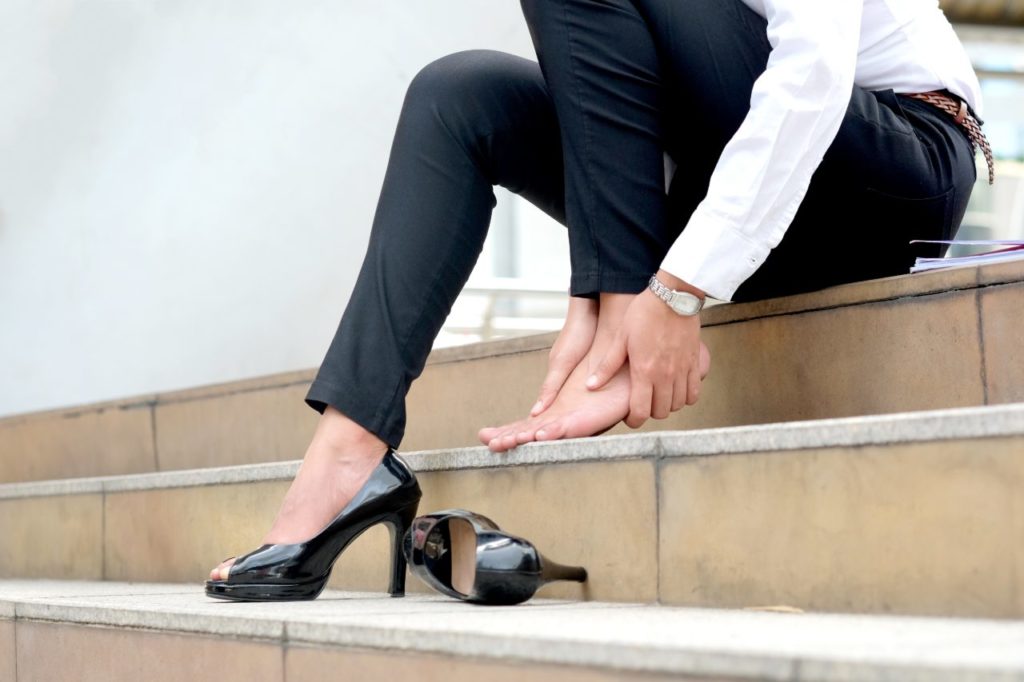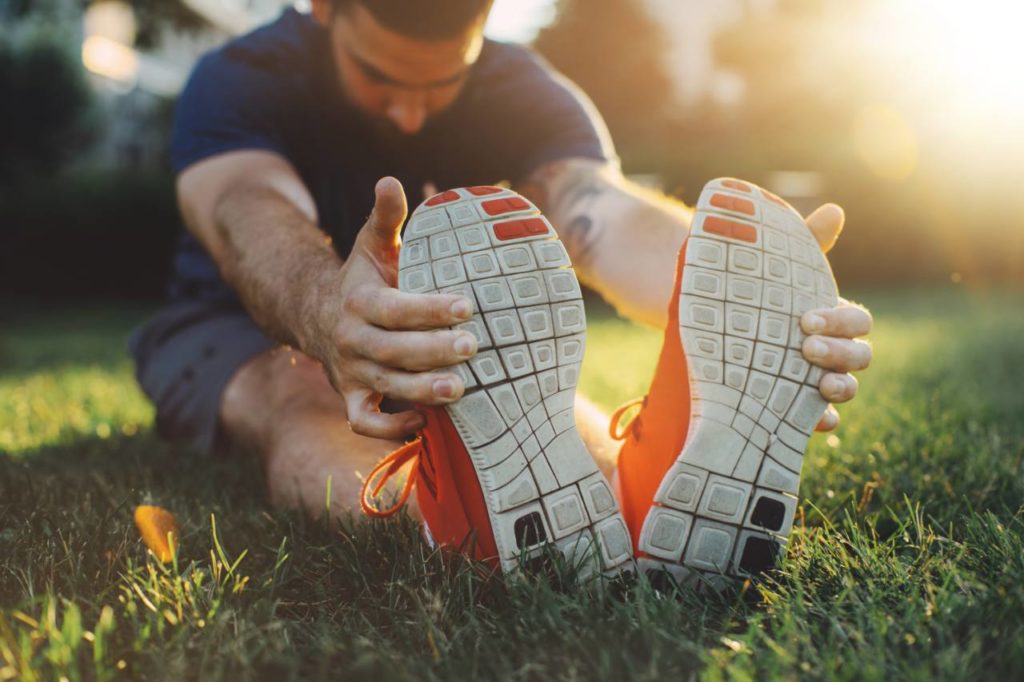As public life in California shifts to contain a pandemic, we’re guessing you’re spending a lot more time at home than usual.
At a time like this, making sure you’re able to get outside, get exercising, go for a hike, and use those feet (while maintaining that critical 6-foot bubble of personal space) is more important than ever—both for physical health, and for your sanity!
In other words, this is no time to let heel pain stand in the way of your activity!
If heel pain is currently preventing you from living as full a life as you can, or you’ve struggled with heel pain on and off a lot in the past, observing these tips may help you relieve and prevent that discomfort.

Choose Your Shoes Wisely
We’re not saying you can’t be fashionable. But you should never let your sense of fashion override your need to choose shoes that are comfortable, supportive, and functional!
Think of it this way: those towering heels and skimpy ballerina flats might look super cute, but others aren’t going to notice them if they’re too busy watching your face grimace in pain!
Most people do great with a comfy pair of casual or all-purpose athletic shoes (“athleisure” as they say) for everyday wear. Making sure they actually fit properly, though, is one essential piece that a lot of people seem to miss. Always take the time to measure your feet and test the fit on any pair of shoes when you go shopping—even adult feet change shape and size over time! Shoes should be comfy from the get-go—if they have to be “broken in,” they don’t fit and never will.
Also, if you plan to specialize in a particular sport—like running, tennis, or basketball—choose sport-specific shoes for these activities. Different types of activities challenge (and jeopardize) your feet and ankles in different ways, and you want your shoes to be well matched for the activities you’re asking your feet to perform.
Don’t Be a “Weekend Warrior”
Here’s what we mean by this:
- Try not to follow up long periods of inactivity with brief, intense bursts of very high-volume activity.
- Ease into new sports or exercise routines gradually and ratchet up the intensity slowly, increasing by only 10 to 15 percent (at most) per week.
In other words, try to stay consistently active several times per week, every week of the year, and be careful and deliberate when you change seasons or routines.
We know that’s not exactly the easiest advice to follow even in the best of times, and much less so if a government order is keeping you from physical activities you’re more accustomed to (shopping, going to the gym, working a physically demanding job, etc.). But it’s still really important!
Doing “too much, too soon” can spell doom for your heels, since your body needs time to adjust to new types of stresses. So try to stay active throughout the week, and don’t get too gung ho on new workouts. Start at a pace you know you can handle, then turn the dial up slowly from there.

Warm Up Before Physical Activity
Even if you are exercising more regularly and consistently throughout the week, you still need to take time to warm up before each session if you want to reduce your risk of injuring your heels (and other parts of your body, for that matter.) Cold muscles and tendons are much more susceptible to damage than those that are properly warmed up.
Start with a brisk 5-minute walk or jumping jacks, followed by some dynamic stretches that mime the movements you will be making. Then, after your workout or game, take time for some static stretches and cool down. Proper conditioning of your calf muscles, for instance, can go a long way in heading off painful Achilles tendon and plantar fascia problems.
Cross Train and Rest Appropriately
Running is a great activity. So are many other high-impact sports that require running or jumping. But those activities can be quite hard on your heels, and if you do them every day you never give your body a chance to recover and rebuild itself.
That may mean mixing up your running routine with a biking or swimming day a couple times a week. It could mean taking frequent breaks if you are on your feet all day at work to take the pressure off.
Your feet can be damaged by trauma from running or long periods of standing. The only way for them to repair the damage is allowing them enough rest time for healing to take place.
Maintain a Healthy Body Weight
This one is pretty simple. Heavier people just put more stress on the bones, fascia, and other tissues of their heels and feet for every step they take and every second they stand than a lighter person does.
In fact, the actual impact force on your heels may be equivalent to several times your body weight, especially when jogging, sprinting, or jumping. So you might be surprised at how big of a difference losing even a relatively small amount of weight can make.
See a Podiatrist if Your Pain Persists
Most minor cases of heel pain tend to be easy to manage at home. Follow the above tips, and you’ll have a great chance of greatly minimizing or eliminating your discomfort.
However, persistent heel pain, or pain that is so severe it starts to really limit your ability to be active, should always trigger a visit to the podiatrist. It isn’t normal, there is a reason for it, and we have the training, experience, and expertise needed to identify the cause and prescribe an effective treatment plan.
Better yet, 95% of the time, surgery isn’t required!
If you’re suffering, don’t wait any longer to call the office of Dr. Yuko Miyazaki in Berkeley, CA. You can reach us by phone at (510) 647-3744, or schedule online using our contact form.